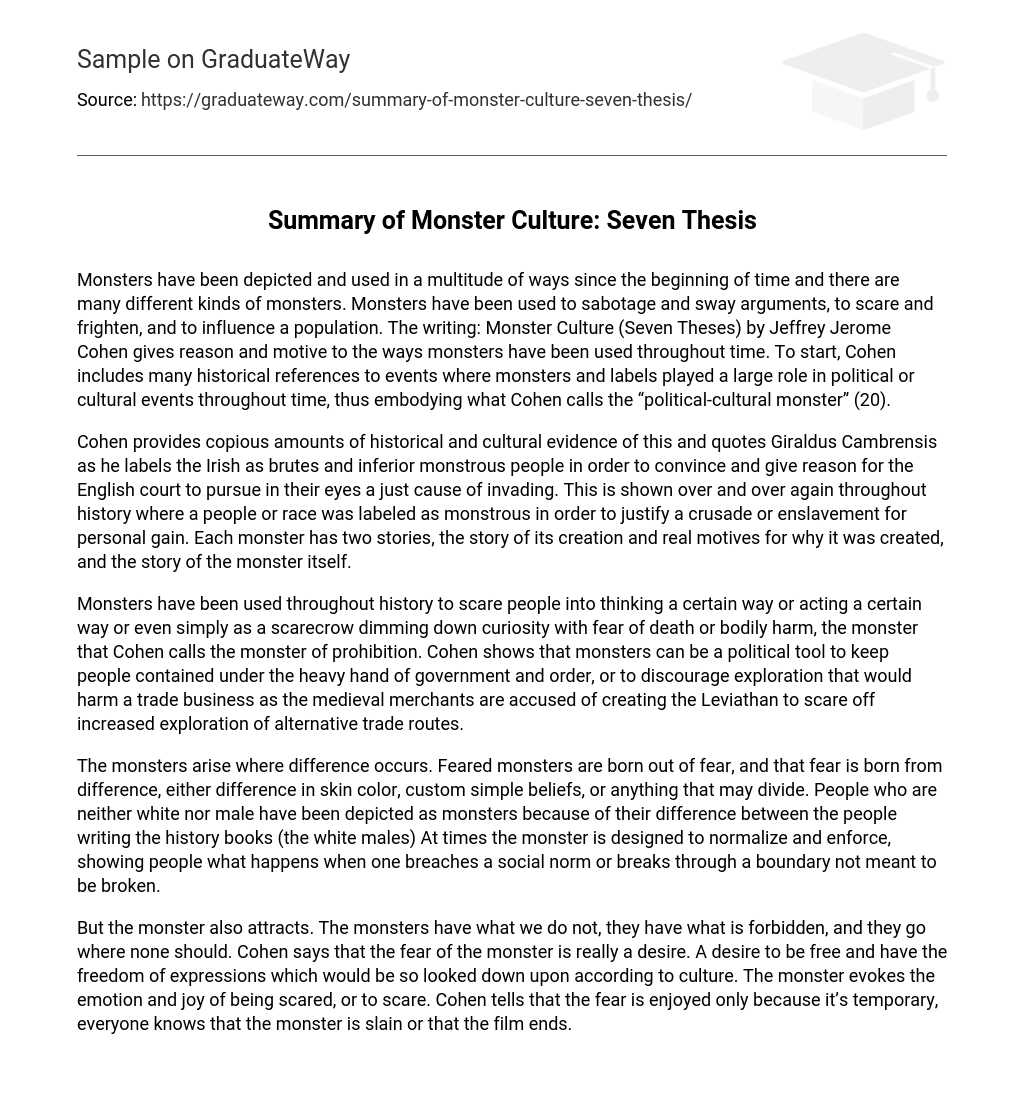Monsters have been depicted and used in a multitude of ways since the beginning of time and there are many different kinds of monsters. Monsters have been used to sabotage and sway arguments, to scare and frighten, and to influence a population. The writing: Monster Culture (Seven Theses) by Jeffrey Jerome Cohen gives reason and motive to the ways monsters have been used throughout time. To start, Cohen includes many historical references to events where monsters and labels played a large role in political or cultural events throughout time, thus embodying what Cohen calls the “political-cultural monster” (20).
Cohen provides copious amounts of historical and cultural evidence of this and quotes Giraldus Cambrensis as he labels the Irish as brutes and inferior monstrous people in order to convince and give reason for the English court to pursue in their eyes a just cause of invading. This is shown over and over again throughout history where a people or race was labeled as monstrous in order to justify a crusade or enslavement for personal gain. Each monster has two stories, the story of its creation and real motives for why it was created, and the story of the monster itself.
Monsters have been used throughout history to scare people into thinking a certain way or acting a certain way or even simply as a scarecrow dimming down curiosity with fear of death or bodily harm, the monster that Cohen calls the monster of prohibition. Cohen shows that monsters can be a political tool to keep people contained under the heavy hand of government and order, or to discourage exploration that would harm a trade business as the medieval merchants are accused of creating the Leviathan to scare off increased exploration of alternative trade routes.
The monsters arise where difference occurs. Feared monsters are born out of fear, and that fear is born from difference, either difference in skin color, custom simple beliefs, or anything that may divide. People who are neither white nor male have been depicted as monsters because of their difference between the people writing the history books (the white males) At times the monster is designed to normalize and enforce, showing people what happens when one breaches a social norm or breaks through a boundary not meant to be broken.
But the monster also attracts. The monsters have what we do not, they have what is forbidden, and they go where none should. Cohen says that the fear of the monster is really a desire. A desire to be free and have the freedom of expressions which would be so looked down upon according to culture. The monster evokes the emotion and joy of being scared, or to scare. Cohen tells that the fear is enjoyed only because it’s temporary, everyone knows that the monster is slain or that the film ends.





